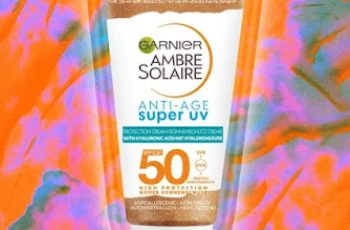Vampire facelifts can make your skin plumper and firmer – here’s how they work
In the vast sea of cosmetic procedures, platelet-rich plasma treatments are trending (and have been for a while). In short, this science-sounding treatment uses layers of PRP in your blood to induce all sorts of skin changes. PRP microneedling facials (also known as “vampire facials”) can boost cell turnover, reduce fine lines and wrinkles, and even out skin tone. “Vampire breast augmentations” use PRP to enlarge breasts in a minimally invasive way. More recently, people have been turning to “vampire facelifts” to combat more visible signs of aging.
Are you curious what this variation of a facelift entails? Below, we asked dermatologists to tell you everything you need to know about the skin treatment.
What is a vampire facelift?
A vampire facelift is a dermatological procedure that combines injections of platelet-rich plasma (PRP) with injections of dermal fillers. It’s used to improve the appearance of the skin – often for anti-aging purposes, such as tightening the skin and minimizing the appearance of wrinkles and fine lines.
Here, we should clarify an important point: The vampire facelift is different from the vampire facial, which is a microneedling treatment. “In contrast to the vampire facial, which uses microneedling, the vampire facelift requires injections of dermal fillers,” explains Dr. Engelman.
Benefits
“PRP is known to be a powerful skin rejuvenator because it contains high concentrations of growth factors that stimulate collagen and elastin synthesis, reversing signs of aging and promoting youthful, radiant skin,” says Dr. Park. According to Dr. Engelman, a vampire facelift can be performed by combining PRP injections with dermal filler injections to enhance the long-term effects of dermal fillers in tightening sagging skin. The effects usually last about a year, but this can vary from person to person. If the positive effects wear off, you can schedule maintenance treatments.
Best Candidates for a Vampire Facelift
A vampire facelift is a good option for those who want to improve the appearance of their skin, especially if they have age-related issues such as sagging skin, wrinkles, and fine lines. For some people, however, a vampire facelift might not be the best idea.
“I would not recommend this procedure for anyone who is pregnant, taking medical retinoids, or has an active skin infection,” Engelman says. “It’s also not the best option for anyone with extremely loose skin, as the desired results will most likely require cosmetic surgery.”
What to Expect
A vampire facelift involves the following steps:
Before the injection, your doctor will apply numbing cream to your face. This makes the treatment more comfortable.
He’ll draw a small amount of blood from your arm.
He uses a centrifuge to extract platelet-rich plasma from your blood. “Plasma has a higher concentration of growth factors, which increases effectiveness,” Engelman explains.
Hyaluronic acid fillers are injected into different areas of the skin to add volume and reduce the appearance of wrinkles.
Platelet-rich plasma is injected into the same areas as dermal fillers. “This stimulates collagen production and improves elasticity,” Engelman says.
Possible Side Effects
Most people can expect little to no downtime. Some people experience minor side effects, such as swelling and bruising, Engelman notes. (This should subside after a few days.) To avoid complications, she recommends learning about the procedure ahead of time and consulting with your doctor to make sure you’re being treated by a licensed medical professional.
Park also recommends being cautious about who you treat with this procedure. “If the clinic is busy and has multiple PRP patients at the same time, your PRP could accidentally get mixed up with another patient’s PRP,” she warns.
Cost
The cost of a vampire facelift varies. “Depending on where you live and how many areas you and your doctor are treating, [a vampire facelift] can cost anywhere from $1,000 to $5,000,” says Dr. Tracy Evans, MD. Your doctor’s experience and the equipment they use can also affect the price of a vampire facelift.
Aftercare
According to our experts, aftercare is important to maintain the desired results after a vampire facelift. Engelman offers the following aftercare tips:
To reduce the risk of infection, do not touch or rub the treated area. Wash your hands thoroughly before applying recommended skin care products.
Apply a gentle moisturizer to your face to protect and heal the skin barrier.
Always use sunscreen, especially immediately after treatment. UV radiation can damage sensitive skin as it heals.
Conclusion
If you are looking for a procedure to address issues such as fine lines, wrinkles, and sagging skin, a vampire facelift may be able to help. This non-invasive cosmetic treatment uses the power of platelet-rich plasma from your blood and hyaluronic acid fillers to target problem areas. You can expect little to no recovery time, with swelling and bruising being the most common short-term side effects. If you decide to have a vampire facelift, consult a licensed professional, such as a board-certified dermatologist or plastic surgeon.
DQH Can I use salicylic acid first and then vitamin C?
It’s easy to create a skincare routine, but knowing how to use it is another thing entirely. In most cases, if you’re not getting the desired skin results, it could be due to the layering of conflicting ingredients. So, is it possible that salicylic acid and vitamin C are such ingredients? Or are these active ingredients the duo that’s been missing from your skincare routine? If you want answers, stick around because today we are going to explain the benefits of salicylic acid and vitamin C and how they can be used in your daily life.
What are the benefits of salicylic acid for skin?
Salicylic acid is one of the most commonly used beta hydroxy acids and is favored by many people with oily, acne-prone skin. This acid is derived from willow bark, and unlike its water-soluble relatives (called alpha-hydroxy acids), salicylic acid is oil-soluble, which means it can penetrate deeper into the lower layers of the skin. Once it reaches the lower layers, it can help unclog pores of excess sebum, dirt, bacteria, debris, and impurities. This results in clearer skin tones and greater definition.
Not only does salicylic acid benefit the underlying layers, but the outer surface of the skin benefits as well. When applied to the skin, salicylic acid removes the buildup of dead skin cells. This is accomplished by breaking the bonds that hold dead cells to the surface. Over time, this can cause the complexion to look dull and prone to acne, blackheads, and other blemishes.
If you’d like to learn more about salicylic acid and how it can improve your skin, check out this dedicated blog post from a beauty insider.
What are the benefits of vitamin C for skin?
Vitamin C is considered one of the most powerful antioxidants, which means it is very effective at fighting free radicals and preventing them from causing further skin damage. Examples of free radicals include pollution, central heating, UV rays and harsh climate. They attack proteins, fats and cell membranes as soon as they come into contact with the skin, causing signs of premature aging such as fine lines and wrinkles as well as hyperpigmentation, flaky patches of skin and loss of elasticity.
Many people usually prefer to use vitamin C in their morning routine as this ingredient gives the complexion a radiant glow. You’ll also find that vitamin C can target areas of hyperpigmentation, plumping the skin and reducing the appearance of fine lines and wrinkles.
The thing about vitamin C is that there are a lot of outdated studies going back to the 1950s that describe vitamin C as an unstable skin component. Thanks to improvements in modern technology, this is no longer the case as all products now contain a stable form of vitamin C.
Visit The Beauty Insider to learn more about vitamin C. So please check out our blog post.
Can I use salicylic acid first and then vitamin C?
Yes, you absolutely can. In fact, it’s thought that using salicylic acid before using vitamin C ensures it penetrates faster and works faster.
This is an efficient way to utilize two power sources, and the reason has to do with pH. For example, the skin’s natural pH is about 4.7, making it slightly acidic. Salicylic acid and vitamin C are also both acidic, and you’ll find that vitamin C is absorbed quickly into the skin. Therefore, using salicylic acid beforehand can increase the acidity of the skin and allow vitamin C to penetrate into the skin faster.
While this is considered an effective way to combine two powerful ingredients, you need to be aware of your skin type and how it reacts to certain active ingredients. Even people with perfect, normal skin can experience skin sensitivity and irritation. Therefore, always consult a doctor or dermatologist before using any new products on your skin.
It’s also important to follow skin application rules. In this case, you need to use the product correctly to ensure you get the best results for your skin. If you’re not sure what I mean, the basic rule for skin is to start with the thinnest consistency and work your way up to the thickest consistency. This prevents a barrier from forming on the surface, preventing other active ingredients from penetrating the skin.
Can I use salicylic acid at night and vitamin C in the morning?
Yes, absolutely, this is considered the most effective way to get returns without any adverse side effects. This is because there is enough time between applications to ensure that the skin’s pH levels return to balance.
You’ll also find that Vitamin C is rich in antioxidants and is perfect for use in the morning to ensure your skin is protected and looking its healthiest. Due to the small size of salicylic acid molecules, it is an acid that is able to reach the deepest parts of the skin. While this is effective at keeping skin clear, it also increases the risk of irritation and photosensitivity. Therefore, many people prefer to use powerful BHAs in their evening routine without exposure to UV rays, pollution, or harsh weather.
Warning: If you avoid using sunscreen every day, none of these ingredients will do what your skin needs. The combination of chemical peels and powerful ingredients increases the risk of further damage to the skin’s surface. Use SPF 50 every day to keep your skin protected and your lipid barrier healthy, even on cloudy days, keeping your skin in top condition.



